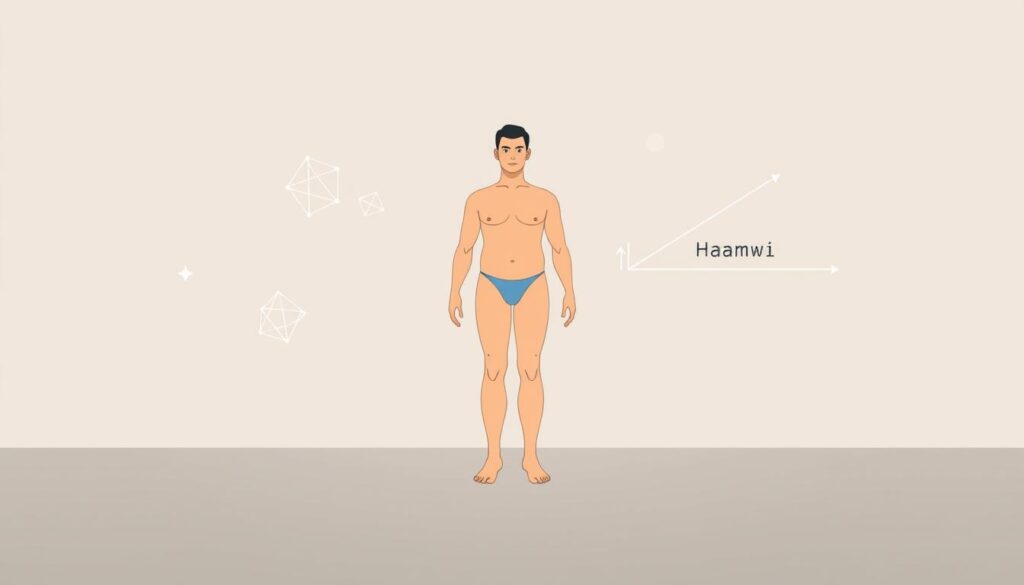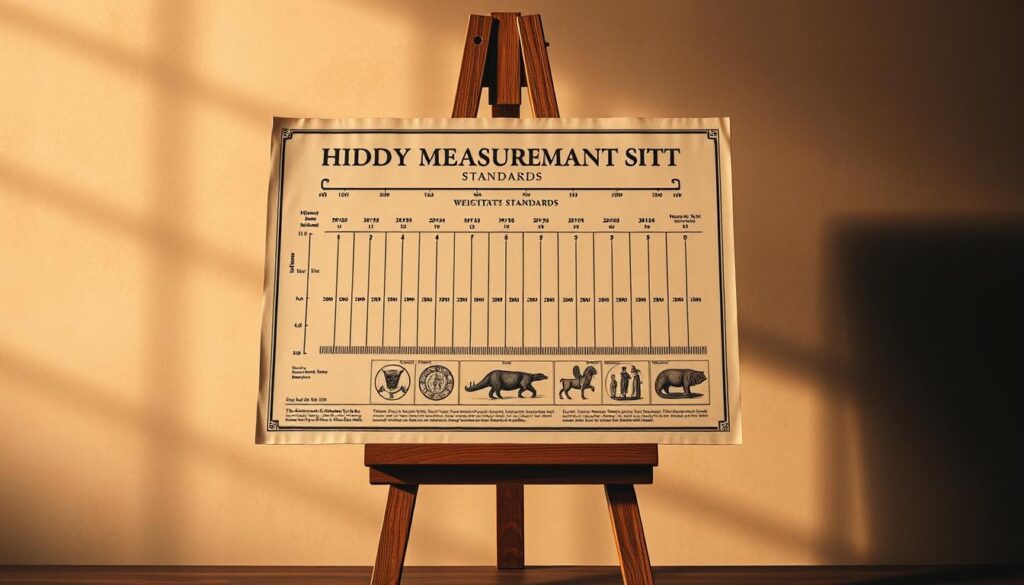For decades, health professionals have used straightforward calculations to estimate healthy weight ranges. One approach developed in 1964 offers surprising insights with just two numbers: height and gender. This system creates personalized benchmarks while acknowledging natural variations in body composition.
The calculation starts with a base weight at 5 feet tall. Women begin with 100 pounds, adding 5 pounds for every inch above this height. Men use 106 pounds as their foundation, adding 6 pounds per additional inch. A 5’4″ woman would calculate 100 + (4×5) = 120 pounds, while a 5’10” man would compute 106 + (10×6) = 166 pounds.
These results aren’t rigid targets. The formula allows a 10% adjustment up or down to account for different body frames. Smaller-boned individuals might subtract 10%, while those with larger frames could add 10%. This flexibility makes the tool more practical for real-world use.
While helpful, these numbers work best when combined with other health indicators. Body mass index (BMI) and waist measurements provide complementary perspectives. Historical records show this method gained traction alongside early obesity research, offering clinicians a quick reference point during patient assessments.
Key Takeaways
- Gender-specific calculations start with different base weights at 5 feet tall
- Each inch above 5 feet adds 5 lbs (women) or 6 lbs (men) to the baseline
- 10% adjustments accommodate varying body frame sizes
- Works alongside BMI for comprehensive health evaluations
- Originated from mid-20th century medical research
- Provides estimates rather than absolute targets
Overview of Ideal Body Weight Concepts
Medical professionals rely on standardized measurements to assess physical well-being. These tools help identify potential health risks linked to extreme weight variations. Two concepts often surface in these evaluations: ideal and target body weight.
Core Definitions in Weight Evaluation
Ideal body weight represents the weight associated with lowest mortality risk for a specific height. Nutritionists use this benchmark during health screenings. The body mass index (BMI) often complements these calculations.
Target weight differs by incorporating individual health goals. While ideal weight uses fixed formulas, target ranges might adjust for muscle mass or chronic conditions. A 5’6″ woman might aim for 125-145 pounds using different assessment methods.
| Measurement Type | Basis | Typical Use |
|---|---|---|
| Ideal Weight | Height formulas | Clinical screenings |
| Target Weight | BMI ranges | Personal health plans |
Clinical Applications
Weight assessments form the foundation of preventive care. Doctors compare patient measurements against established ranges to detect malnutrition or obesity risks. A 6-foot man weighing 190 pounds might fall into different categories depending on muscle-to-fat ratios.
“Weight evaluation tools work best when combined with body composition analysis.”
Modern health evaluations consider multiple factors:
- Bone structure variations
- Metabolic activity levels
- Genetic predispositions
These approaches help create personalized health strategies rather than one-size-fits-all recommendations. Historical weight tracking often reveals more useful patterns than single measurements.
Historical Background and Development of the Hamwi Method
Weight assessment tools transformed dramatically after World War II. Early insurance companies created complex height-weight tables using mortality statistics. These charts required tedious lookups and offered limited flexibility for different body types.
Evolution from Early IBW Equations to Hamwi’s Formula
Dr. George Hamwi revolutionized weight estimation in 1964 with his mental math-friendly system. Unlike bulky actuarial tables, his formula used simple arithmetic: 100 lbs for women and 106 lbs for men at 5 feet, plus incremental adjustments per inch. This approach let clinicians calculate estimates during routine checkups without reference materials.
Earlier methods relied on fixed weight ranges tied to specific heights. Hamwi’s innovation introduced percentage-based frame adjustments. A 1967 medical journal noted:
“The ±10% modification made weight targets adaptable to bone structure variations unseen in prior models.”
| Method | Year | Calculation Basis | Adjustment |
|---|---|---|---|
| Actuarial Tables | 1940s | Mortality Data | None |
| Hamwi Formula | 1964 | Height/Gender | ±10% Frame |
| Modern BMI | 1970s | Mass/Height² | Age/Sex |
Critics argue these equations oversimplify health metrics. However, many clinics still use them alongside BMI for quick assessments. The system’s endurance shows how practical tools often outlive theoretical debates about “ideal” body standards.
What is the Hamwi method for ideal weight?
Health assessments gained precision through Dr. Hamwi’s 1964 innovation. This system simplifies weight estimation using gender-specific starting points. Women begin at 100 pounds for 5 feet of height, while men start at 106 pounds.
Each additional inch alters the results significantly. Females add 5 pounds per inch beyond 5 feet, males 6 pounds. A 5’6″ woman would compute:
| Gender | Base Weight | Added Inches | Total |
|---|---|---|---|
| Female | 100 lbs | 6×5 = 30 lbs | 130 lbs |
| Male | 106 lbs | 10×6 = 60 lbs | 166 lbs |
Frame size adjustments make these numbers adaptable. Smaller-boned individuals might subtract 10%, larger-framed people add 10%. Clinicians often combine these figures with BMI ranges for holistic evaluations.
Research shows this approach works best as part of broader health strategies. A 2021 study noted:
“Weight estimation formulas provide starting points, not final destinations for wellness journeys.”
These calculations help identify potential health risks when paired with body composition analysis. They also inform realistic weight management goals for diverse individuals.
Practical Applications and Calculations
Healthcare providers often turn to simple formulas when estimating healthy weight ranges. These tools help create personalized health plans and medication dosages quickly. Let’s explore how professionals implement these calculations in real-world scenarios.
Gender-Specific Calculations
The system uses distinct starting points for different genders. Women begin with 100 pounds at 5 feet tall, adding 5 pounds per extra inch. Men start higher at 106 pounds, gaining 6 pounds per additional inch.
| Gender | Height | Base Weight | Added Weight | Total |
|---|---|---|---|---|
| Female | 5’7″ | 100 lbs | 7×5 = 35 lbs | 135 lbs |
| Male | 5’11” | 106 lbs | 11×6 = 66 lbs | 172 lbs |
Frame Adjustments Matter
Body structure significantly impacts results. Smaller frames subtract 10% from the total, while larger frames add 10%. A 140-pound calculation becomes 126-154 pounds when accounting for bone structure differences.
Real-World Implementation
Consider these steps for a 5’4″ woman:
- Start with 100-pound base weight
- Calculate 4 inches × 5 pounds = +20
- Total = 120 pounds
- Adjust ±12 pounds for frame size
Clinicians frequently combine these figures with BMI measurements from clinical research. This dual approach helps identify potential health risks more accurately than single-method assessments.
Nutritionists value the formula’s simplicity for creating diet plans. Emergency responders also use it to estimate medication doses when immediate weight data isn’t available. While not perfect, these calculations provide actionable starting points for diverse health strategies.
Comparing the Hamwi Method with Other Weight Assessment Techniques
Health assessments often involve multiple measurement tools to capture different aspects of physical wellness. While some focus on mass-to-height ratios, others prioritize structural differences or metabolic needs.
Contrasting BMI and Ideal Body Weight Measurements
Body mass index (BMI) divides weight by height squared, creating categories from underweight to obese. The Hamwi formula uses linear calculations based on gender and frame adjustments. This table highlights key differences:
| Metric | Calculation | Key Consideration |
|---|---|---|
| BMI | Weight (kg)/Height (m²) | Population-level trends |
| Hamwi Formula | Base weight + inches adjustment | Individual frame size |
BMI works well for large groups but misses muscle-fat distinctions. Hamwi’s approach helps set personalized targets but struggles with extremes. A 6’7″ athlete might show normal BMI despite exceeding formula ranges.
Strengths and Limitations of the Hamwi Approach
Advantages include instant mental math and frame adjustments. Clinicians appreciate its speed during initial consultations. A 2020 review noted:
“Weight estimation formulas remain vital for rapid clinical decisions despite modern tech alternatives.”
Challenges emerge with atypical body types. The system doesn’t account for pregnancy, amputations, or significant muscle mass. For weight loss plans, professionals often combine it with body fat percentage tests for accuracy.
Conclusion
Modern health evaluations balance simplicity with scientific rigor. We’ve explored how gender-specific calculations starting at 5 feet provide practical weight ranges. The ±10% frame adjustment acknowledges natural body diversity, making results adaptable for different builds.
Our analysis confirms this formula’s enduring value lies in its mental math simplicity. Clinicians combine it with body mass index measurements for layered insights. While newer tools exist, the system remains relevant for initial screenings and medication dosing estimates.
Individual factors like bone structure and muscle mass require consideration alongside numerical results. Health professionals emphasize using these calculations as starting points, not absolute targets. Pairing them with body composition analysis creates more accurate wellness plans.
As research evolves, weight assessment methods will likely integrate advanced metrics. Yet foundational tools like this formula continue supporting clinical decisions. Understanding their purpose and limitations helps individuals make informed health choices within broader lifestyle strategies.



